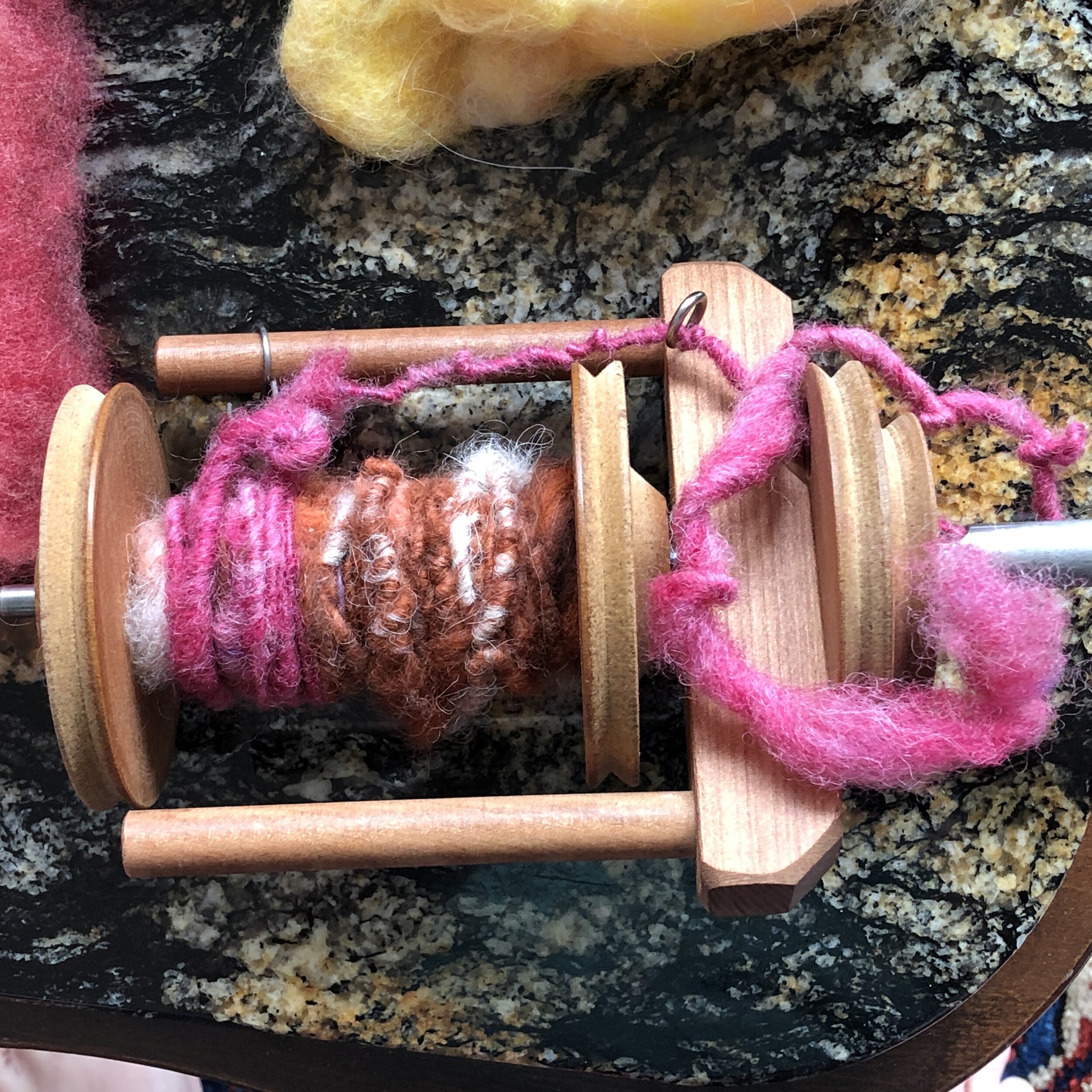List of fibers and their sources
(information as of 2-3-2021)
Local Cloth Spinning Study Group Blog
Fiber farmers in the WNC Local Cloth Area
List of Fiber Samples for Spinning Study Group
Sept 21, 2020
Montadale, Windy Wool Windings
Shetland, a farm in Henderson County
Oct 20, 2020
Blue Ridge Mountains Blend #1, Local Cloth (30% Montadale, 25% Shetland, 25% Alpaca, 20% Mohair)
Blue Ridge Fine #1, Local Cloth (60% Montadale, 40% Alpaca)
Nov 20, 2020
Romeldale, CVM Windy Wool Windings
Tunis, Wellspring Farm, Yancey Co, NC
3/4 Blue Faced Leicester x 1/4 Leicester Longwool (first shear), Love Handle Farm, Alexander, NC
3/4 Cormo x 1/4 Corriedale, Martha Owen Woolens
Dec 28, 2020
Dorset, Brian Grimm, Blackberry Ridge, Southwest VA
Icelandic, Katie Gaddy, Hidaway Farm
Cormo top, Sebette Hamil, Leicester, NC
Romney, Barnardsville 2019
Jan 26, 2021
Teeswater, Dry Creek Naturals, Taylorsville, GA
Llama, Peace of Eden Farm, Madison, NC
Merino, Khakalaki Farm, Trenton, SC
Black Shetland, Sourwood Fiber Farm, Scott Spell, Fletcher, NC
I have mentioned Local Cloth, an Asheville fiber group supporting artists and farmers, in a previous blog (Nov 20, 2020). Local Cloth just sent out a member survey with questions particular to this past covid year. One of the questions was “Did you acquire any new hobbies this year?” My enthusiastic answer was blogging and hand spinning wool (double exclamation points, smiley face)!
I have always loved anything to do with wool and knitting. I sometimes become bored so I tend to switch projects and work in parallel on 3-4 projects. I also take workshops (from Local Cloth) or learn by videos or books. I often lack patience to follow complicated patterns, however I love to design and make things to my specifications and preferences. Since a teenager, I have tried to make many kinds of things, but a lasting interest is working with wool. I think I speak for other knitters when I say that a display or basket full of beautiful yarns makes my heart race; I rush over to look and feel. Visual and tactile pleasures—please drag me out of the shop! Hence, the famous stashes so many of us create.
I am a newbie at spinning. After a lesson and some internet learning, I jumped in at the deep end by joining Local Cloth’s Spinning Study Group last fall. This is an opportunity to be around experienced spinners and fiber farmers (virtually on Zoom at present), to experience and learn about spinning fibers obtained from different sheep breeds and local farmers, and to enjoy spinning in the company of others. Judi Jetson gave me my first (socially distanced, outdoors) spinning lesson at her home in Weaverville. Judi, the driving force behind the creation and development of Local Cloth and the current president, is very generous with her time and talents. By the way, I’ll trade ya—something I made for something you made or taught me! Contact me!!
During the Spinning Study Group sessions, we look up only occasionally at the computer screen while spinning. I learned from leading Local Cloth’s Virtual-Handwork Circle that my screen grabs are much better when I say to the group “Look up and smile”! (Photo 1). Spinners like to spin together indoors or outdoors, at your house or mine. Spinning alone indoors on a rainy day is also wonderful. In the spinning study group, each 2 hour monthly session involves spinning, discussing, and characterizing four different yarns from local farmers. To see my photos of the fibers before spinning check out the Local Cloth blog by clicking Learn More. To see how my yarns look and how they knit up, stay tuned!
Photo 1. Spinning Study participants on 12-28-2020.













